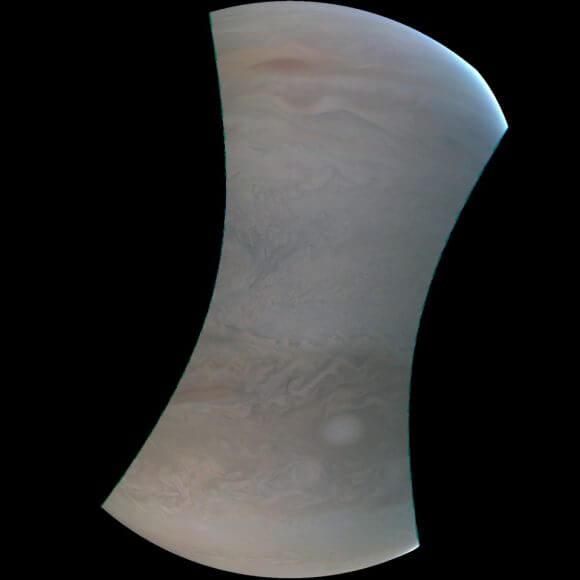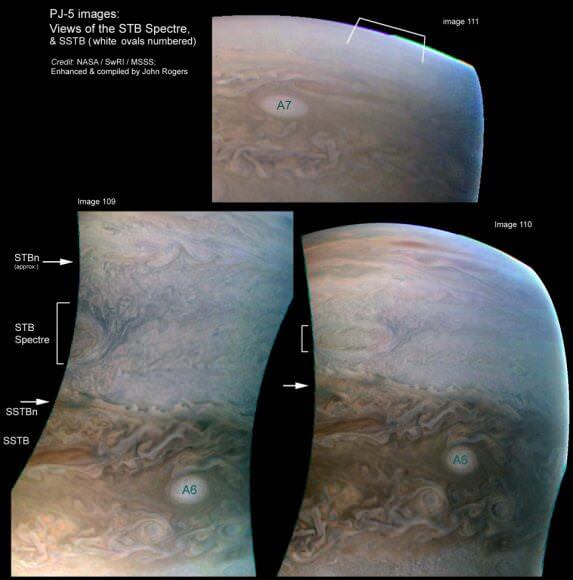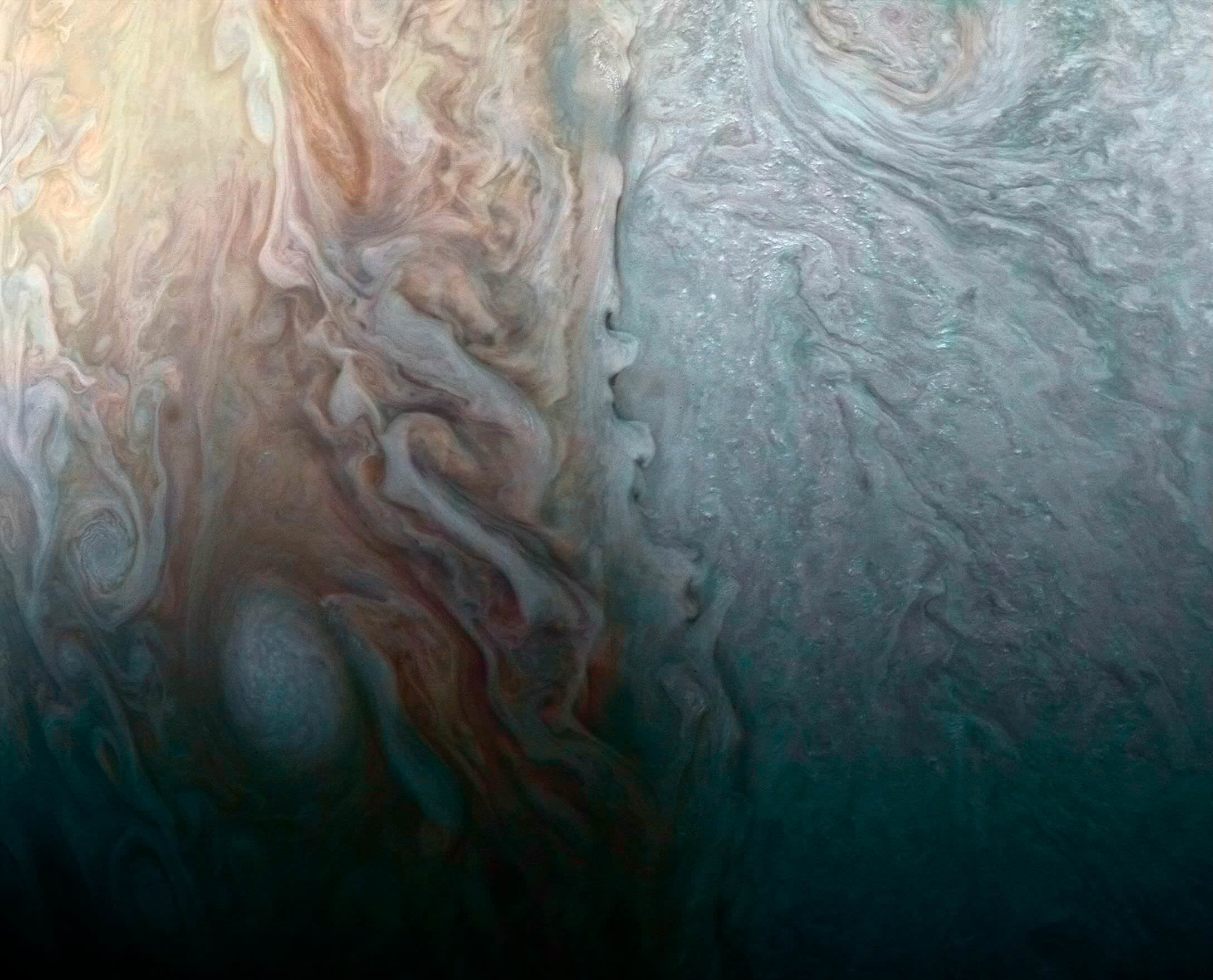The Juno mission has made some remarkable finds since it reached Jupiter in July of 2016. During the many orbits it has made around Jupiter’s poles – which occur every 53 days – some stunning imagery has resulted. Not only have these pictures revealed things about Jupiter’s atmosphere, they have also been an opportunity for the public to participate in the exploration of this giant planet.
The latest feature that was publicly selected to be photographed is known as “STB Spectre“. This feature was photographed on March 27th, 2017, at 2:06 a.m. PDT (5:06 a.m. EDT), when Juno was 12,700 km from the planet. During this pass, the JunoCam captured a series of light and dark clouds coming together in Jupiter’s South Tropical Region (STR).
The left side of the photograph corresponds to the South Temperate Belt (STB), a prominent belt in Jupiter’s Southern Hemisphere which is typically darker. It is here that “the Spectre” – the wide bluish streaks on the upper right side of the photograph – can be seen, and which represent a long-lived storm that was taking place when the area was photographed.

On the right side of the image, we see the neighboring Southern Tropical Zone (STropZ), one of the most prominent zones on the planet. Here, we see another atmospheric condition colliding with the Spectre, one which is characterized by a series of anticyclonic storms (the small white ovals). Not surprisingly, it is within these two bands that part of the large anticyclonic storms known as the “Great Red Spot” and “Red Spot Junior” also exist.
Like all images snapped by the JunoCam since the probe began orbiting Jupiter, this image was made available to the public. In this case, the image was processed by Roman Tkachenko, an amateur astronomer, image processor, and 3D artist who’s body of work includes images and visualizations for the New Horizons mission. The description was produced by John Rogers, the citizen scientist who identified the point of interest.
As Tkachenko Universe Today via email, working with these missions pictures is all about bringing raw images to life:
“This image is based on a raw image. Working with raw data you can get a higher resolution than we can see in already constructed, and map-projected official versions. I worked with colors, sharpness and dynamic range to show more details and variety.”
This is something new for a space mission, where the public has a direct say in what features will be photographed for study, and can help process them as well. “The participation of amateur astronomers and citizen scientists in this mission is an opportunity to be involved in something gorgeous,” said Tkachenko. “They can also show their skills to the public and help the Juno team look at all these data from different angles.

The STB Spectre was one of five Points of Interest (POIs) that were selected by the public to be photographed during Perijove 5 – Juno’s fifth orbit of the planet, which began on March 27th, 2017. Before the next maneuver (Perijove 6) commences on May 19th, 2017, the public will once again be able to vote on what features they want to see photographed.
Things that have been captured during previous orbits include the stunning image of the “Jovian pearl“, a detailed view of Jupiter’s northern clouds, breathtaking images of the swirling clouds round Jupiter’s northern and southern poles. Many more are sure to follow between now and July 2018, as Juno conducts its seven remaining perijove maneuvers before being de-orbited and burning up in Jupiter’s atmosphere.
To learn more about the rules for voting, and to vote on what you’d like the JunoCam to capture, check out the Southwest Research Institute’s (SwRI) JunoCam voting page. And be sure to enjoy this mission video:
Further Reading: NASA

